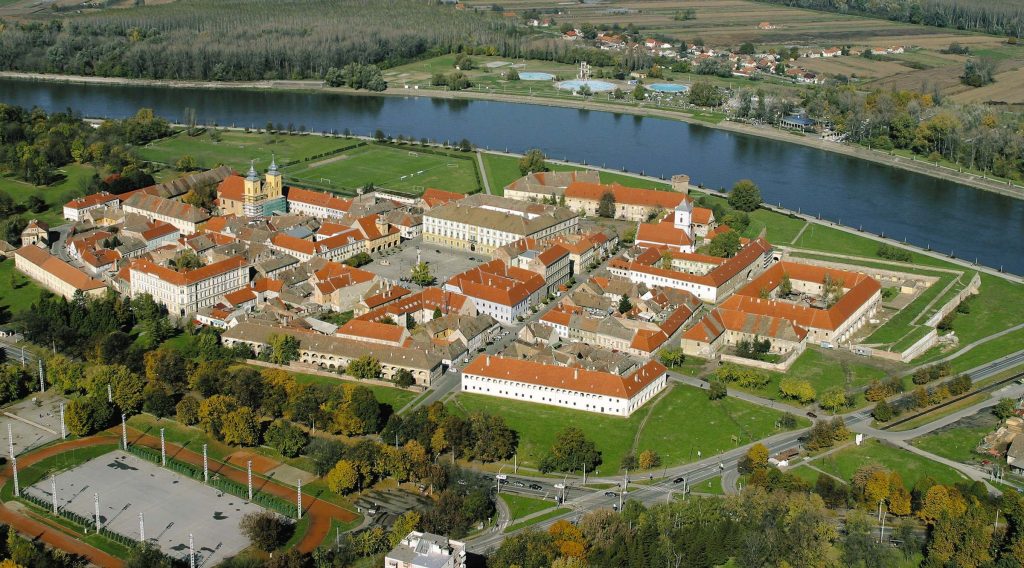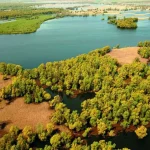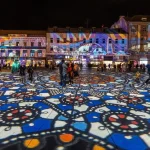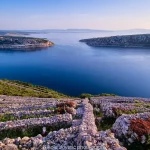July 8, 2020 – TCN travel series The Croatian Road Less Travelled with Marc Rowlands. In this edition, we visit Osijek in eastern Croatia, on the banks of the Drava river and look at things to do in Osijek
Situated in the far east of Croatia, the city of Osijek is a sizeable distance from the regular coastal or capital city footfall of visiting tourists. Indeed, considering its history, importance and its vast, unique appeal, its surprising just how many Croatians you meet who have also never been to Osijek. Sitting on the banks of the Drava river, the city is the de facto capital of Slavonia and the administrative centre for Osijek-Baranja county and served as a strategically important outpost in the Roman, Ottoman and Austro-Hungarian empires. Osijek was the first city in Croatia to have a tramway and, after Rijeka, the first Croatian city to be serviced by an international train route (running to Pécs in Hungary via Beli Manastir, this very line was re-opened in 2018).
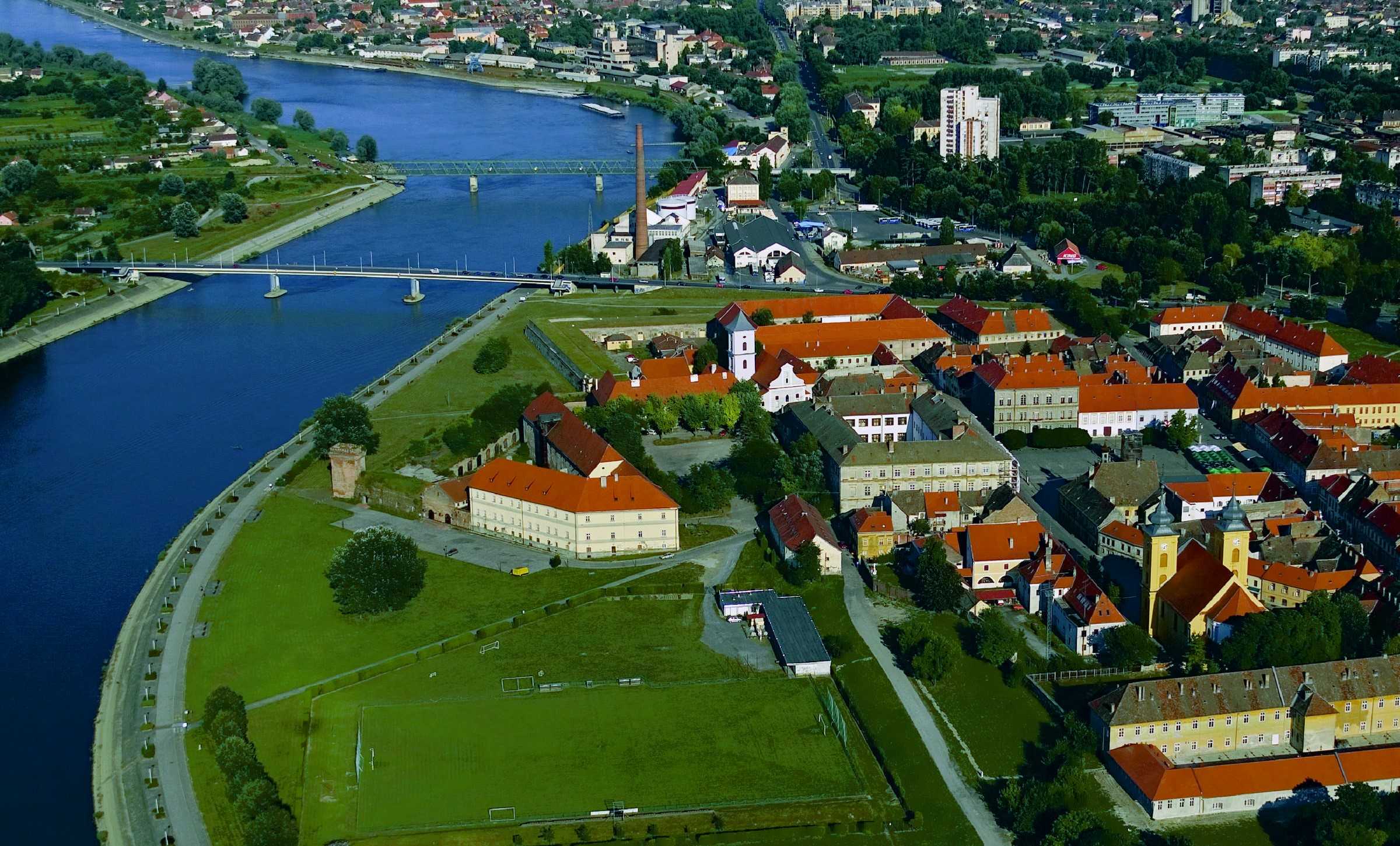
Osijek’s Old Town, Tvrđa, is the largest and best-preserved ensemble of Baroque buildings in Croatia. It sits spectacularly by the Drava river, separated by the defensive walls of its Hapsburg-era fort © Romulić & Stojčić
Why visit Osijek?
Osijek is an incredibly beautiful place and perhaps Croatia’s only option which simultaneously offers all the thrills of a genuine city coupled with incredible nature. It’s possible to walk from one end of the city to the other passing only through statue-littered parks, the air is constantly fresh and, being Slavonia, the ground is entirely flat, making it a great place for bicycle enthusiasts. It’s also a great place for swimming and other water activities such as fishing, rowing and boating. Osijek has a range of great nightlife options; three catering to fans of turbo-folk, two for those who prefer tamburica and Croatian folk music, one for students, one for the alternative crowd and several bars which host live music including jazz. Specialist monthly club nights offer drum n’ bass, hip hop, house music and the techno night, Traum, is well known across Croatia and fronted by two of the country’s finest DJs in the genre – Insolate and Volster.
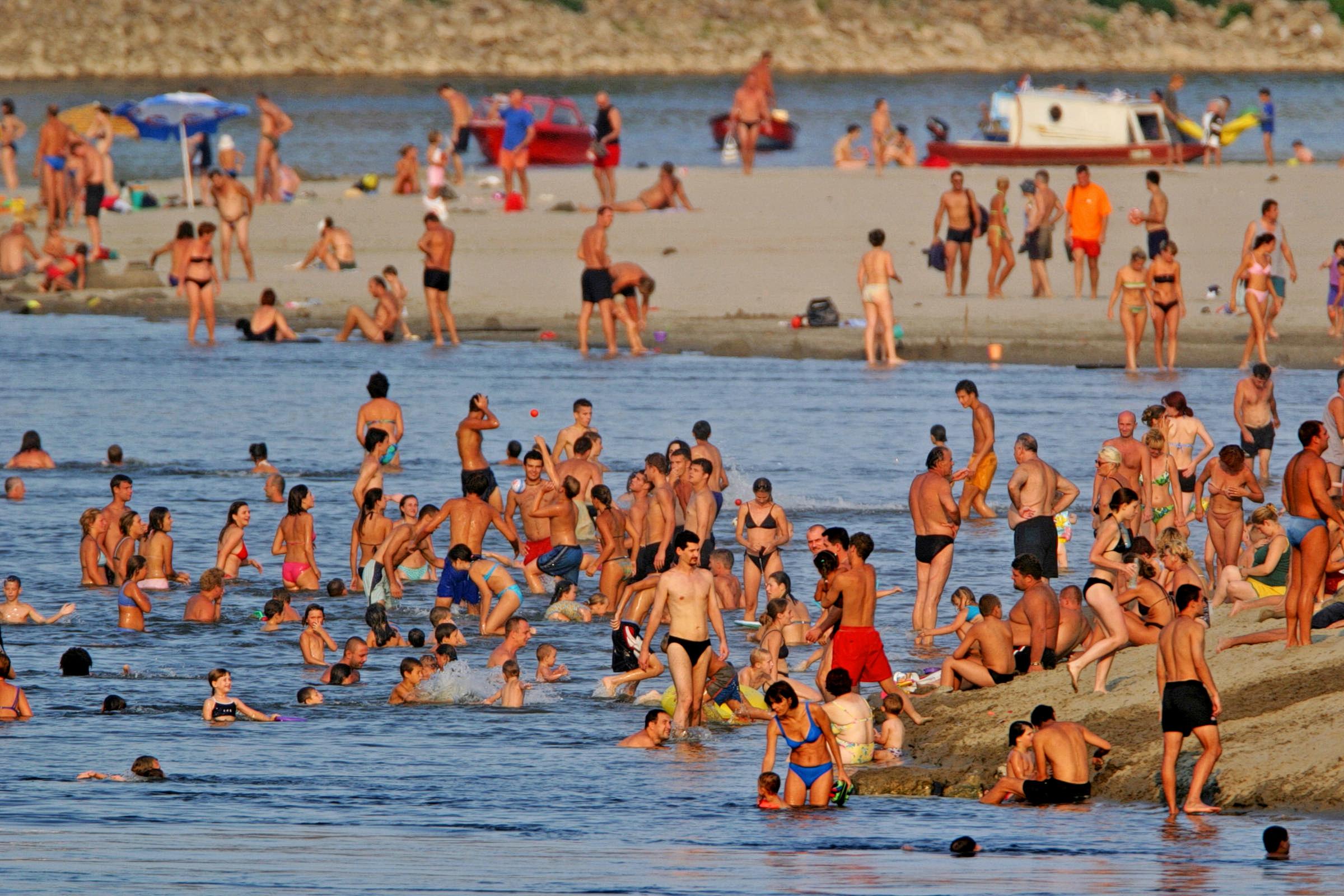
Cooling off in the Drava river, right in the heart of the city – just one of Osijek’s great swimming options © Romulić & Stojčić
Osijek has, by far, the longest waterfront promenade in Croatia. Both banks of the Drava are pedestrianised. On the side of the city, the prom is lined with parks, cafes, bars and restaurants built within converted river-cruising boats. This side also holds the impressive Osijek city walls, behind which lies the Old Town centre, Tvrđa. On the opposite banks, you’ll be walking alongside wild nature, with the vast open-air swimming complex Copacabana at one end and Osijek Zoo at the other. Osijek’s pedestrianised bridge links both sides in the middle; it’s is one of the city’s most iconic sights and looks particularly special at night when colourfully lit.

Osijek pedestrian bridge by night © Romulić & Stojčić
Osijek and wider Slavonia are Croatia’s least-heralded gastronomic powerhouses. The cuisine here is as unforgettable as the warm Slavonian welcome. Paprika-rich stews such as čobanac (made with locally caught wild boar and deer), fish paprikaš and perklet are a clear influence of nearby Hungary and most attempts to faithfully reproduce them outside the region fall extremely short. Although all you’ll ever hear about is pršut from Dalmatia and Istria, Slavonians are masters of curing pork and even have their own high-quality breed, Slavonian black. Authentic kulen from Baranja is unquestionably the highest quality sausage from Croatia and you’d have to look hard to top Slavonia’s paprika or garlic-flavoured kobasice too. In Osijek, as in its wider region, you can go to a restaurant and order one of the best pizzas you’ll ever try and pay the same as you would for a starter course on the coast.
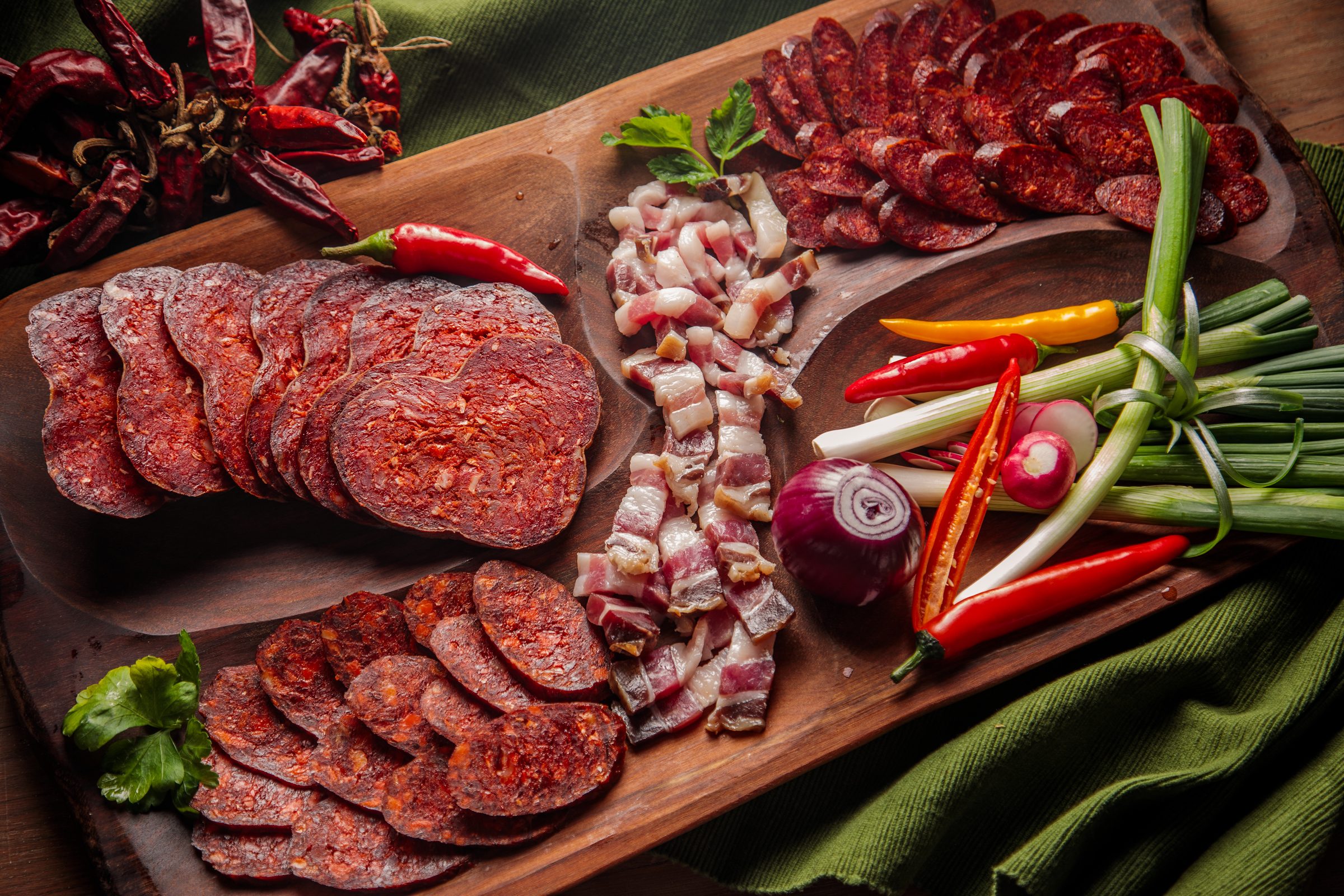
A selection of Slavonian meats. Kulen is a speciality of Slavonia and Baranja, the best quality sausage made in Croatia. It is preserved, made from top cuts of pork, richly red from paprika and versions from both Slavonia and Baranja are protected at an EU level. You can spot the one from Baranja by its irregular shape © Romulić & Stojčić
If you’re a fishing or hunting enthusiast, this is also the place for you – days floating down the Drava along the 15 kilometre stretch before its confluence with the Danube can be as unforgettable as the monster-sized fish you can catch here. Osijek also makes a great permanent base for travel in the wider region, with trips across the nearby Serbian and Hungarian border offering different cuisines and culture again. The Slavonian white wine industry can also be explored from here. Equidistant between Zagreb, Budapest and Zagreb international airports, it’s conveniently placed on the intrepid backpacker’s route too.

Rowing on the Drava river in Osijek. The city has produced several champions in the sport © Romulić & Stojčić
How to get to Osijek
Osijek has its own airport. With established internal and international routes, this holds huge potential for the city. However, it is not without its problems. That no public transport service runs between the airport and the city is shameful. Unless you know a local, your only option is a taxi, whose fixed rates are substantially higher than the 25 kuna maximum it will cost you to travel between any two points in the city itself. Conflict between budget airlines and authorities has resulted in some international routes being cancelled. Bargaining budget airlines demand lower landing fees in return for the tourists they can deliver into the local economy. But, largely, those using the routes are not tourists; they are locals from Croatia, Hungary, Bosnia and, in particular, Serbs from Vojvodina, for whom Osijek is the most convenient airport to fly to on their way back from work in Germany or Ireland. Why should Osijek subsidise their travel? One solution may be to implement a passenger landing fee which can be fully recouped by tourists via vouchers for any accommodation they take in the city or wider Slavonia.
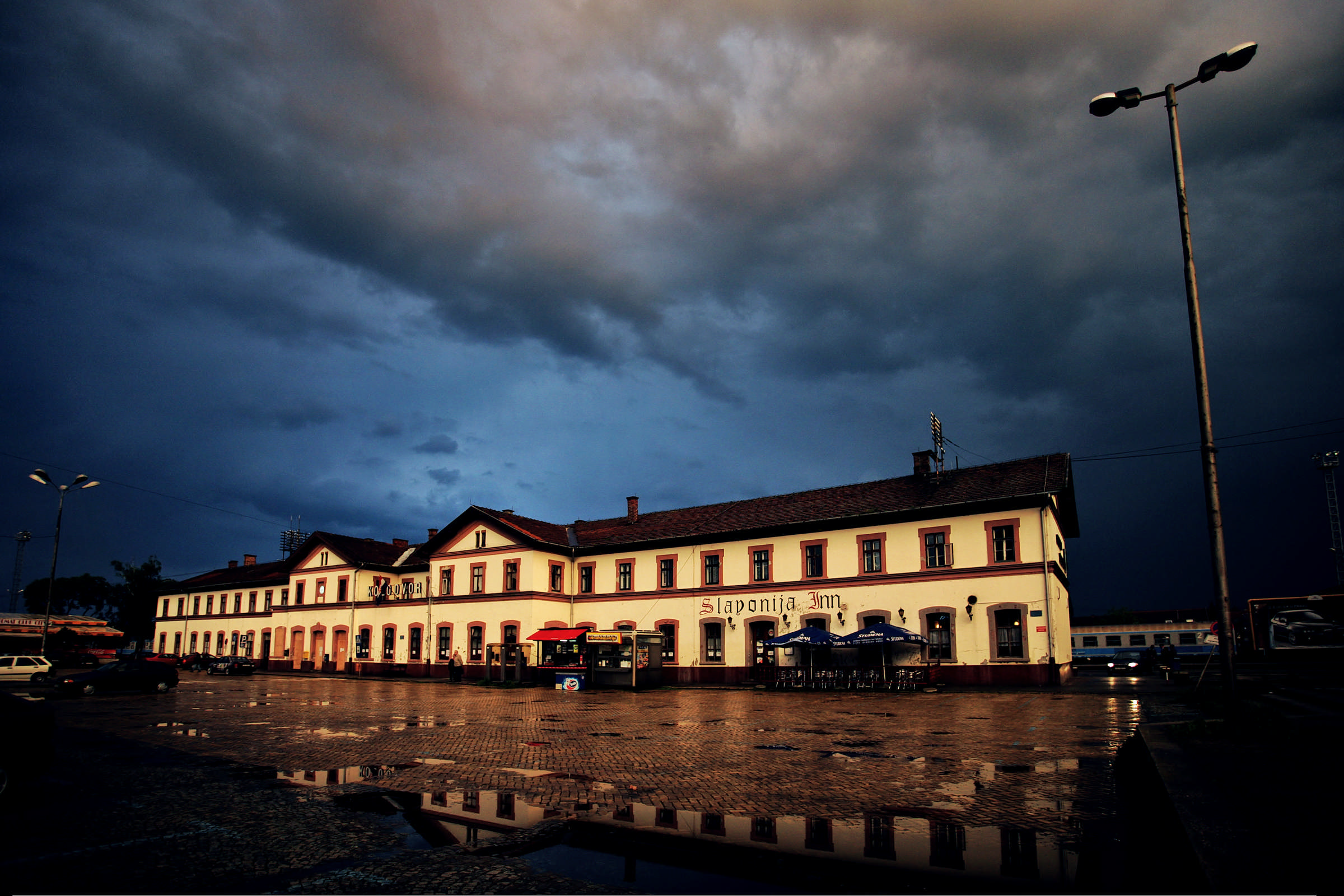
Osijek train station, one way to arrive when you visit Osijek © Romulić & Stojčić
Osijek is well connected by bus; you can travel there from Belgrade and Novi Sad in Serbia, from Zagreb, direct from coastal regions Istria, Kvarner and Dalmatia and even from Montenegro, via Dubrovnik and Imotski. It is accessible by train from all of northern Croatia and Zagreb although the lines and stock have not been updated in so long that, shamefully, it’s actually quicker to take the fast train from Zagreb to Vinkovci, disembark and take a local bus to Osijek than it is to travel on the direct train there from the Croatian capital.
Where to eat: Slavonska Kuća, Kod Ruže, Vrata Baranje or Čarda kod Baranjca are brilliant, informal places to try traditional Slavonian cuisine, including all dishes mentioned previously. Further out of the city, Ugostiteljski Obrt Varga in Bilje, Citadela and Darócz in Vardarac and Didin Konak in Kopačevo are really special versions of the same. Rustika is the best sit-down pizza restaurant in the city, has a lovely summer courtyard for dining and is extremely affordable.
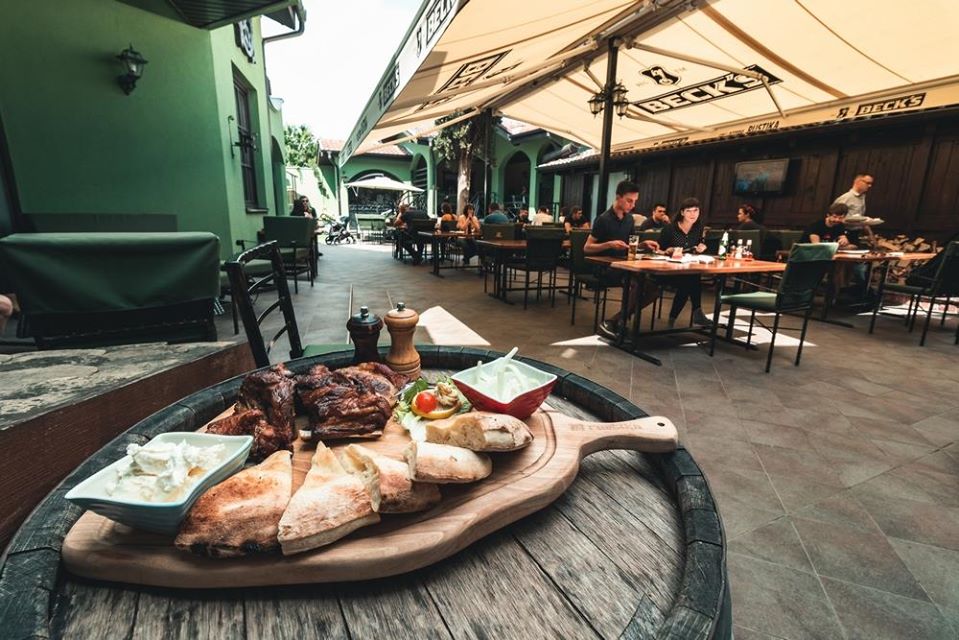
The courtyard at Rustika, a great, casual place to dine and try Slavonska pizza when you visit Osijek © Grill pizzeria Rustika
Food to go / home delivery: Lipov Hlad and Pizzeria Novi Saloon do the best home delivery pizza in the city (Rustika deliver too). Other choices are thin on the ground, save for the standard fast-food chains and pekara (the El Pan bakery on the edge of Sjenjak hood does the best burek with meat).
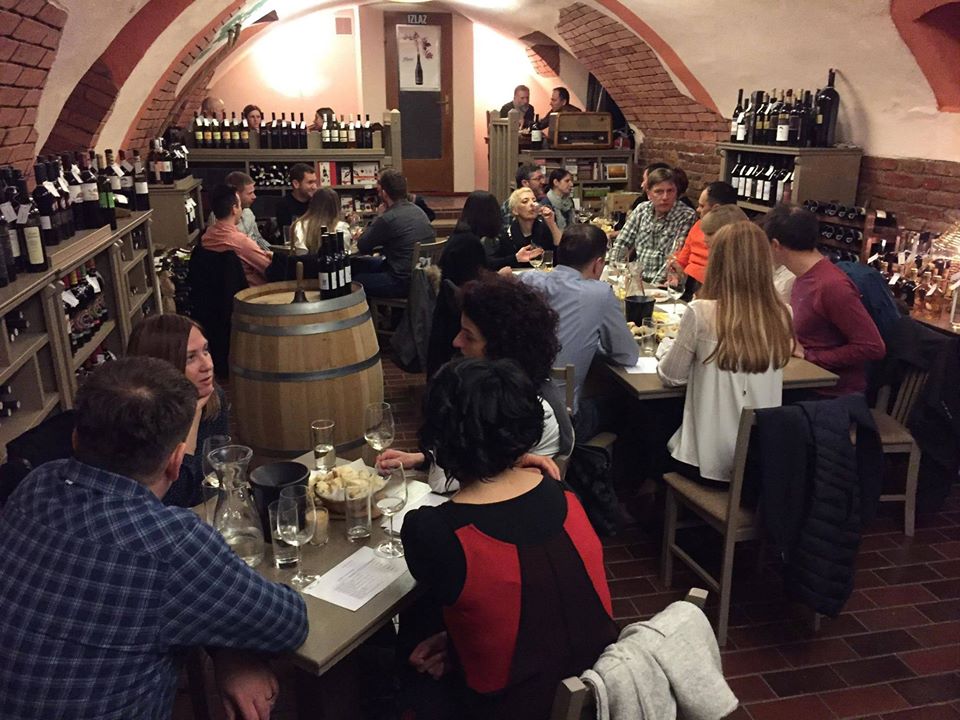
Get to know Slavonian wine when you visit Osijek © Vinoteka Vinita
Where to drink: The simple but extremely passionate Vinoteka Vinita is one of the best places to try Slavonian and Croatian wines, with many top and rarer titles sold by the glass. If you’re more into beer, Beertija in the modern city centre has a great range. General Von Beckers on Tvrđa is the best place to try the leading local craft ale, Beckers, but all of the bars on Tvrđa are worth investigating and during the summer their terraces stretch far into the historic square creating a unique atmosphere.
What’s new? Osijek’s football club is undergoing a renaissance following its purchase by new investors. An impressive new stadium is reaching completion and you shouldn’t be surprised to see this team challenging for the top domestic titles, or reaching European competitions, in the near future.
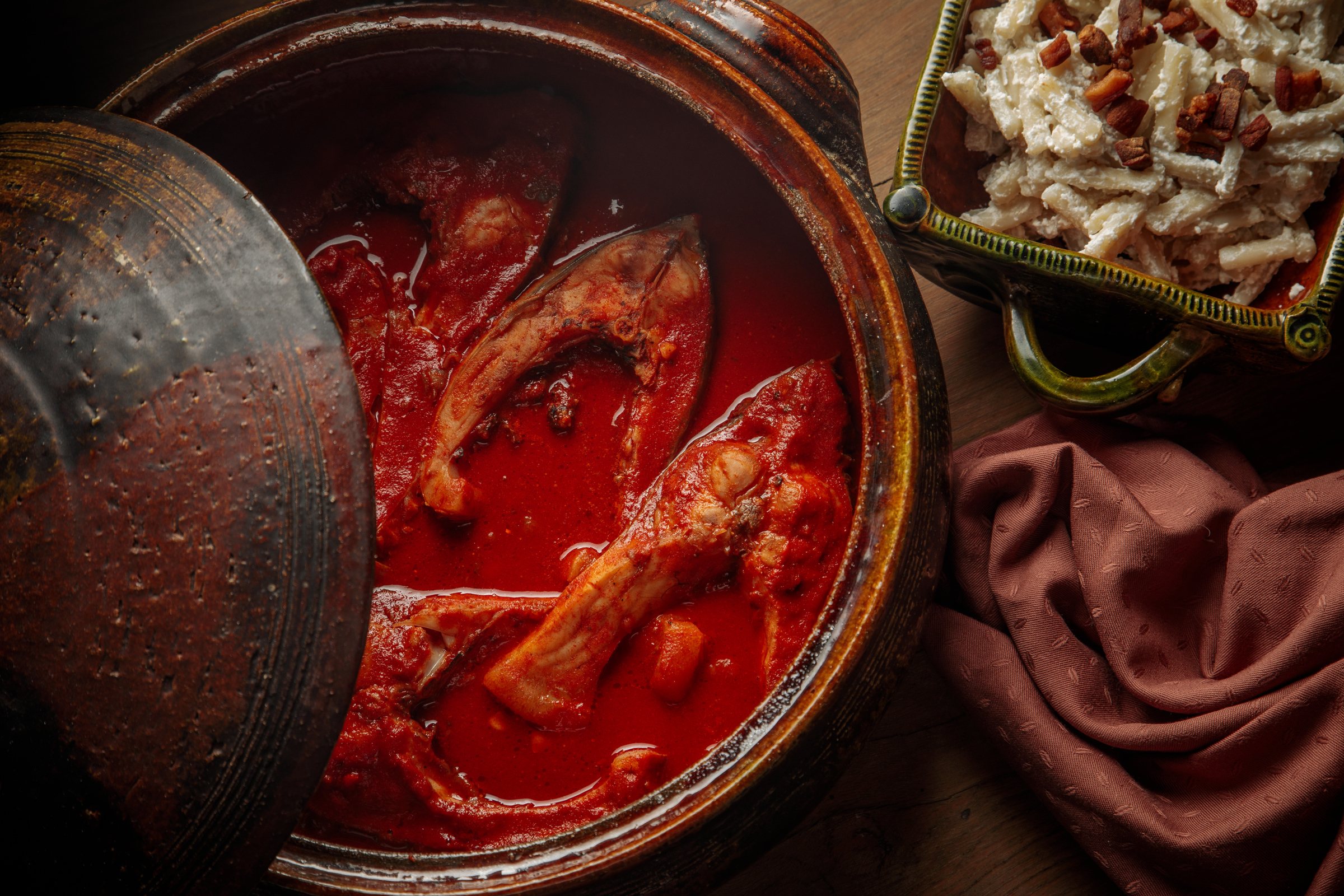
Fiš paprikaš is a Slavonian speciality. Spicy from paprika, it is made from river fish and can often be seen being cooked in a large pot over a blazing open fire if you visit Osijek in warmer months © Romulić & Stojčić
What not to miss: The protected nature park Kopački rit is wonderful to visit at any time of year, a sanctuary for all manner of wildlife, particularly rare species of birds. On Tvrđa, Slama Land Art hosts workshops, art and music events and you’ll meet great creative types there. There’s an extreme sports event, Pannonian Challenge, which sees international competitors visit Osijek and an annual Osijek Beer Festival which feels more like a street party. There’s also a music festival called UFO. Osijek Wine Days and the celebrations celebrating the end of term at the city’s sizeable university are each year accompanied by great partying and music performances. Look up the art deco Cinema Urania. At over 100 years old, it’s Croatia’s best independent cinema outside Zagreb. If you’re looking for something a little more upmarket than the aforementioned Copacabana outdoor pools, or if you’re visiting in cooler months, the renowned Bizovac Toplice is close by and there are free bus shuttle services from the city. It’s a sprawling spa complex with multiple pools, offering fun and wellness therapies. But, whatever you do, don’t miss the extraordinary and varied architecture of Tvrđa or Slavonian cuisine.
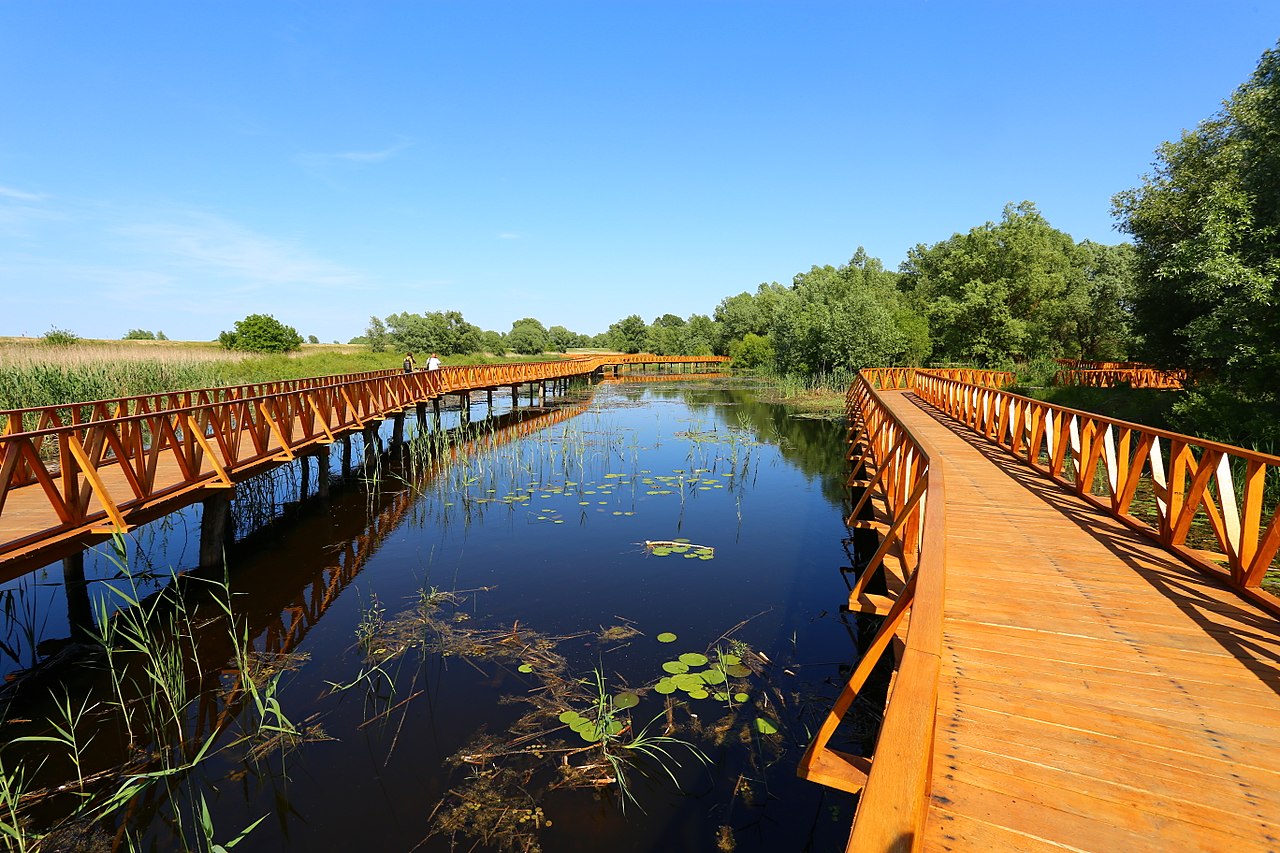
Kopački rit. The nature reserve is a must all year round when you visit Osijek © Misalalic
What to buy: If you’re heading somewhere else in Croatia after you visit Osijek, take some Baranja kulen with you for posh sandwiches. Slavonia is famous for its honey, which is protected at an EU level. Take some back home with you. Local designers Lega Lega make cool t-shirts and accessories emblazoned with words exclusively used in the local dialect. Pick up some Slavonian white wine when you visit Osijek. Graševina is the most commonly made white wine in Croatia and the most popular. They make the best Graševina in Slavonia, but also look out for Chardonnay, Pinot Blanc, Pinot Gris, Sauvignon Blanc and Traminac too. There are countless excellent wine producers in Slavonia to look out for, including Kutjevo Graševina, Krauthaker, Galić, Trs, Adžić, Kolar, Enjingi, Antunović, Erdut and Iločki Podrumi.

‘Lega’ in local dialect is short for colleague. It is a term affectionately (and exclusively) used when speaking to someone from Osijek. Try using it when you visit Osijek © Lega-Lega
On these links you can read about the other destinations in our The Croatian Road Less Travelled series:
Ludbreg – a site of Holy pilgrimage where the historic meets the contemporary
Donji Miholjac – a hidden gem in the heart of the Pannonian basin
For the latest travel info, bookmark our main travel info article, which is updated daily.
Read the Croatian Travel Update in your language – now available in 24 languages
Join the Total Croatia Travel INFO Viber community.

